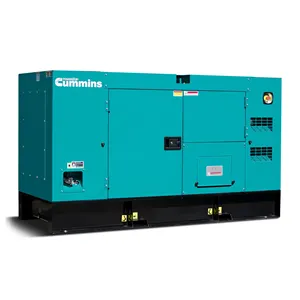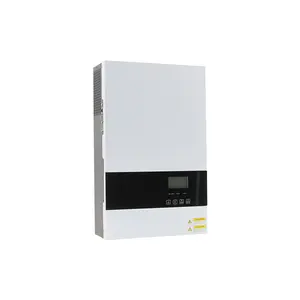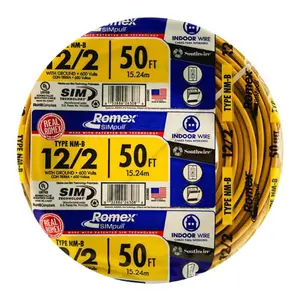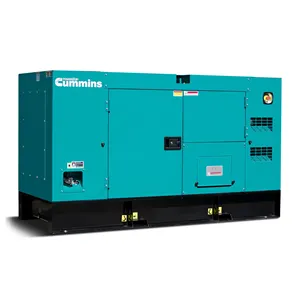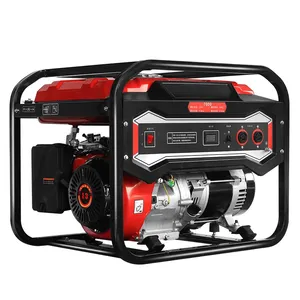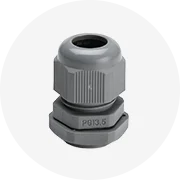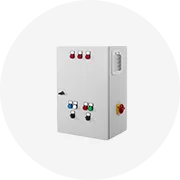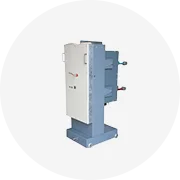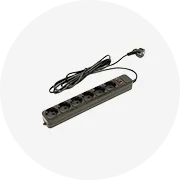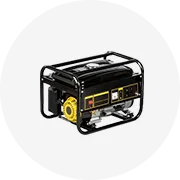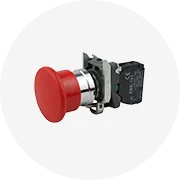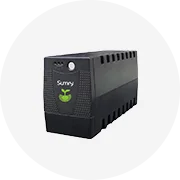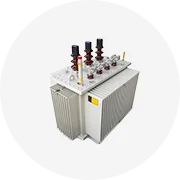Phổ biến trong ngành của bạn






Màn Hình Cảm Ứng Hmi 7 Inch Công Nghiệp Chống Nước Hiệu Suất Cao Điều Khiển Công Nghiệp HMI Giảm Giá Mạnh
27,77 US$ - 40,99 US$
Đơn hàng tối thiểu: 1 Bộ







Chất lượng cao giảm giá thích ứng với tất cả các thương hiệu HMI Touch Panel HMI PLC tất cả-trong-một điều khiển công nghiệp con người Ethernet giao diện máy
34,77 US$ - 37,70 US$
Đơn hàng tối thiểu: 1 Hộp




Coolmay EX3G-70KH-44MT Điều Khiển Nhiệt Độ Tất Cả Trong Một HMI/PLC 7Inch NTC10K/NTC50K/NTC100K
59,00 US$ - 269,00 US$
Đơn hàng tối thiểu: 1 Cái







Hiệu suất cao thích ứng với tất cả các thương hiệu HMI Touch Panel điều khiển công nghiệp HMI giảm giá Ethernet giao diện máy con người máy
29,77 US$ - 37,70 US$
Đơn hàng tối thiểu: 1 Hộp







Kinco Iốt MK043E-20DT HMI PLC Tất Cả Trong Một Màn Hình Cảm Ứng Với Lập Trình Điều Khiển Tích Hợp Bảng Điều Chỉnh Hỗ Trợ Từ Xa
65,00 US$ - 100,00 US$
Đơn hàng tối thiểu: 1 Mẫu Anh



Hàng Mới Fuji UG221H-LE4 Màn Hình Cảm Ứng HMI Box Điều Khiển
365,00 US$ - 410,00 US$
Đơn hàng tối thiểu: 1 Cái






Bộ Điều Khiển Tự Động Bảng Điều Khiển HMI Plc
Sẵn sàng vận chuyển
335,00 US$ - 350,00 US$
Đơn hàng tối thiểu: 1 Cái
Vận chuyển mỗi chiếc: 47,00 US$




Coolmay Mini Màn Hình Cảm Ứng Hmi Lập Trình Logic Điều Khiển
Sẵn sàng vận chuyển
115,00 US$ - 149,00 US$
Đơn hàng tối thiểu: 1 Cái
Vận chuyển mỗi chiếc: 26,75 US$






Bán Sỉ Màn Hình Cảm Ứng Hmi 10 Inch Hiệu Suất Cao Bộ Điều Khiển Màn Hình Công Nghiệp Bộ Điều Khiển Tất Cả Trong Một Với Hmi
27,77 US$ - 40,99 US$
Đơn hàng tối thiểu: 1 Bộ




Bộ Điều Khiển Logic Phần Mềm Lập Trình Delta CNC PLC Và HMI Hiệu Suất Cao DVP12SA11R Với Giá Tốt
200,00 US$ - 300,00 US$
Đơn hàng tối thiểu: 1 Cái






NB7W-TW00B Điều Khiển Hmi Lcd Plc Bảng Điều Khiển Màn Hình Cảm Ứng 7 Inch
200,00 US$ - 250,00 US$
Đơn hàng tối thiểu: 1 Cái






Delixi Bộ Điều Khiển Cảm Ứng HMI Bảng Điều Khiển Màn Hình Cảm Ứng 5 Inch Mitsubishi Proface Plc HMI
39,00 US$ - 79,00 US$
Đơn hàng tối thiểu: 1 Bộ


Bộ Điều Khiển Tự Động Hóa Công Nghiệp 4.3 Inch Rs485 Plc Hmi Tất Cả Trong Một
92,00 US$ - 165,00 US$
Đơn hàng tối thiểu: 1 Cái






Bộ Điều Khiển Plc Màn Hình Cảm Ứng HMI TP1200 12 Inch Màn Hình Cảm Ứng HMI TP1200 Thoải Mái
680,00 US$ - 800,00 US$
Đơn hàng tối thiểu: 1 Cái




Siemens 6AV6640-0CA11-0AX1 Bộ Điều Khiển Hmi Micro PLC TP177 Với Màn Hình Cảm Ứng Tích Hợp Hmi
300,00 US$ - 450,00 US$
Đơn hàng tối thiểu: 1 Đơn vị






Chất lượng cao lập trình Bộ điều khiển giao diện người máy điều khiển HMI mô-đun 6av3607-1jc20-0ax2, 6av36071jc200ax2
10,00 US$ - 20,00 US$
Đơn hàng tối thiểu: 1 Cái






Resotec | j17-13815 | Bộ điều khiển HMI-Để sử dụng trong tự động hóa công nghiệp/CNC và các chức năng công nghiệp khác nhau
500,00 US$ - 2.500,00 US$
Đơn hàng tối thiểu: 6 Đơn vị





Kinco gl070e Ethernet HMI màn hình cảm ứng 7 inch giao diện người máy CNC HMI PLC điều khiển
100,00 US$
Đơn hàng tối thiểu: 5 Cái






6AV6640-0CA11-0AX1 TP177 Micro PLC HMI điều khiển với tích hợp cảm ứng groupe Panel Màn hình HMI
100,00 US$ - 200,00 US$
Đơn hàng tối thiểu: 1 Cái






Hot bán giá thấp PLC HMI điều khiển DOP-103WQ HMI màn hình cảm ứng HMI
129,00 US$
Đơn hàng tối thiểu: 5 Cái
Vận chuyển mỗi chiếc: 9,95 US$






10 inch công nghiệp PoE Tablet nhúng PLC HMI điều khiển
Sẵn sàng vận chuyển
99,00 US$ - 149,00 US$
Đơn hàng tối thiểu: 1 Cái
Vận chuyển mỗi chiếc: 39,14 US$



Bộ Điều Khiển HMI Techmation TECH2 + 8 Inch, TECH2 Q8 Techmation PLC
635,00 US$
Đơn hàng tối thiểu: 1 Bộ






TP04P-21EX1R trong kho 100% New Original HMI 4-dòng văn bản Bảng điều chỉnh PLC điều khiển tp04p21ex1r
8,00 US$ - 30,00 US$
Đơn hàng tối thiểu: 1 Cái

Hold in stock PLC Touch Screen Controller HMI Control GS2107-WTBD-N
8,50 US$ - 98,50 US$
Đơn hàng tối thiểu: 1 Cái






Chất lượng cao lập trình Bộ điều khiển con người máy giao diện 6av66410ba110ax1 HMI mô-đun điều khiển 6AV6641-0BA11-0AX1 007
995,00 US$ - 1.000,00 US$
Đơn hàng tối thiểu: 1 Cái






Trung Quốc bán buôn 7 10 inch hiển thị cảm ứng công nghiệp HMI màn hình cảm ứng HMI màn hình cảm ứng PLC HMI điều khiển
70,00 US$ - 125,00 US$
Đơn hàng tối thiểu: 1 Cái









Siemens SIMATIC HMI lập trình điều khiển TP1500 thoải mái Bảng điều chỉnh Màn hình rộng TFT hiển thị 6av21240gc010ax0
299,00 US$ - 799,00 US$
Đơn hàng tối thiểu: 5 Cái






Rievtech PR-24DC-DA-R Sms PLC Điều Khiển Logic Lập Trình Bộ Điều Khiển Thông Minh Tự Động Hóa Giá Plc Điều Khiển Hmi
198,00 US$
Đơn hàng tối thiểu: 1 Cái






PLC lập trình điều khiển với LCD màn hình cảm ứng Siemens lập trình logic điều khiển HMI 6ed1052-1hb08-0ba1
200,00 US$ - 450,00 US$
Đơn hàng tối thiểu: 1 Cái






Bộ điều khiển màn hình cảm ứng 6av2123-2jb03-0ax0 ktp900 HMI mới
774,00 US$ - 801,90 US$
Đơn hàng tối thiểu: 1 Cái

6AV6640-0CA11-0AX1 Bộ Điều Khiển Hmi PLC Micro TP177 Với Màn Hình Cảm Ứng Tích Hợp Hmi
300,00 US$ - 450,00 US$
Đơn hàng tối thiểu: 1 Cái






Bộ Điều Khiển Lập Trình PLC Jetter JX2-SV1 Plc Analog Module Điều Khiển Hmi Plc
250,00 US$ - 500,00 US$
Đơn hàng tối thiểu: 1 Đơn vị




Siemens 6AV6640-0CA11-0AX1 Bộ Điều Khiển Hmi Micro PLC TP177 Với Màn Hình Cảm Ứng Tích Hợp Hmi
100,00 US$ - 200,00 US$
Đơn hàng tối thiểu: 1 Cái






Keyence HMI màn hình cảm ứng VT3-Q5SW VT3-Q5MW Ethernet HMI HMI PLC Bộ điều khiển
19,00 US$ - 199,00 US$
Đơn hàng tối thiểu: 5 Cái






Mt8072ip mới và độc đáo chúng tôi-trong xem HMI màn hình cảm ứng PLC điều khiển 7 inch colour thương hiệu công nghiệp màn hình cảm ứng mt8072ip
89,00 US$ - 149,00 US$
Đơn hàng tối thiểu: 5 Cái






Hiệu suất cao bán buôn 10 inch màn hình cảm ứng HMI điều khiển màn hình công nghiệp bảng điều chỉnh tất cả trong một bộ điều khiển với HMI
20,00 US$ - 1.500,00 US$
Đơn hàng tối thiểu: 5 Cái






Original Xinje không thể thiếu của HMI/PLC điều khiển công nghiệp XP/XMP-18
60,00 US$
Đơn hàng tối thiểu: 1 Cái
Các danh mục hàng đầu
Giới thiệu về điều khiển hmi
Alibaba.com cung cấp các sản phẩm 50837 điều khiển hmi. Có rất nhiều điều khiển hmi lựa chọn dành cho bạn, chẳng hạn như 100% original, mới. Bạn cũng có thể chọn từ tự động, công nghiệp, và tự động hóa công nghiệp điều khiển hmi.
